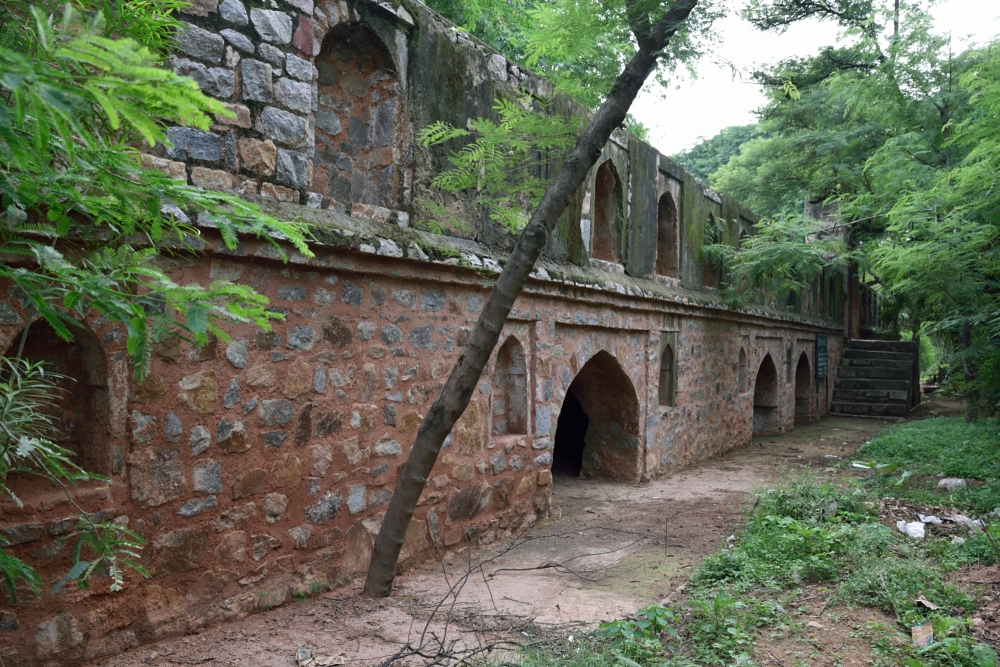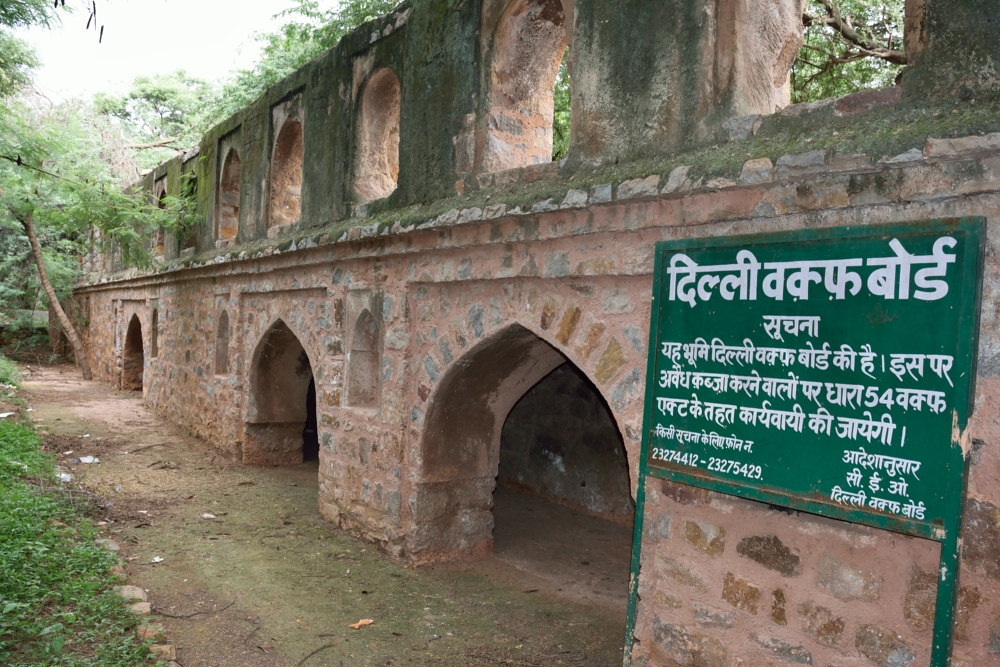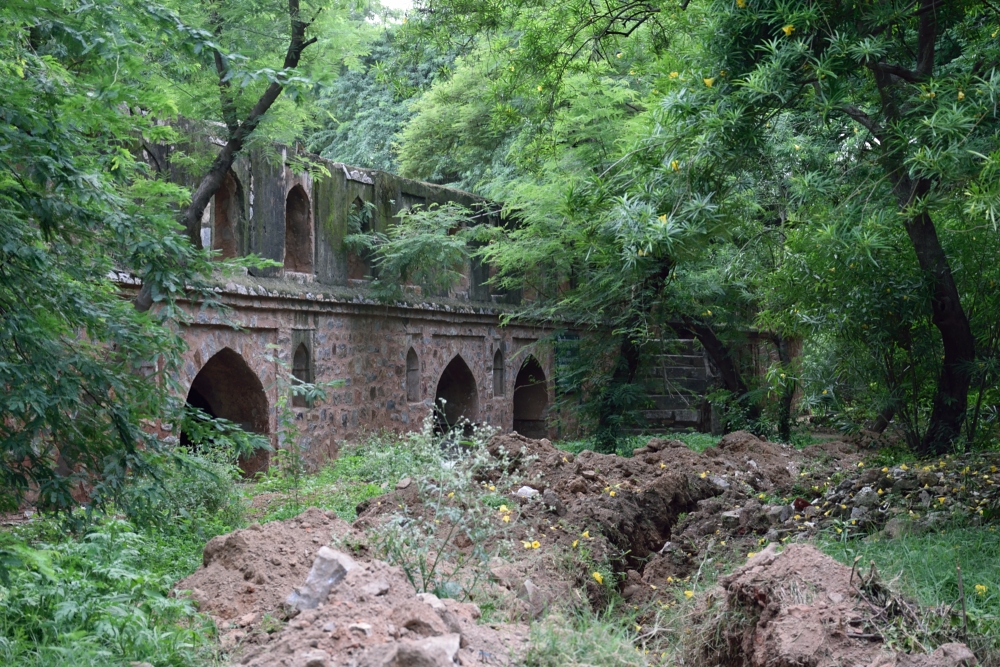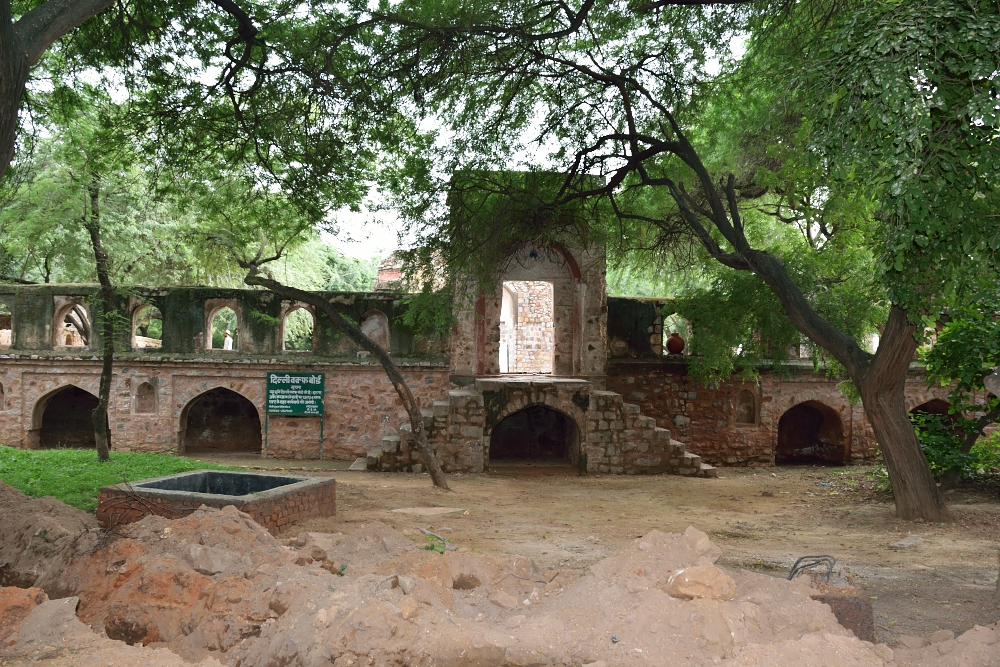





The site is located approximately 1.2 kilometers to the southeast of the Mehrauli bus stand and about 1.7 kilometers to the north of the Qutub Minar metro station. It can be accessed via Anuvrat Marg, which connects to the Mehrauli-Gurgaon Road. The nearest airport is Indira Gandhi International (IGI) Airport, which serves as the primary aviation hub for both domestic and international travelers. For those traveling by train, the closest railway station is Hazrat Nizamuddin Railway Station, providing connectivity to various parts of India. Additionally, Mehrauli bus stand serves as the nearest public transportation hub, offering bus services to different locations across Delhi and nearby regions.
The Mughal garden, built during the reign of Emperor Muhammad Shah (1719?1748), is a beautifully landscaped space that reflects the grandeur of Mughal architecture. The garden is named after Roz Afzun Nazir, a celebrated Khwaja Sara (eunuch) of the emperor, who was responsible for its construction. The western gateway of the garden bears an inscription that praises Muhammad Shah and describes the site as a flower garden at Qutb, comparable to the gardens of paradise. The inscription also includes the year of construction, which corresponds to the 1161st year of the Hijri calendar, marking the 21st year of Muhammad Shah?s reign. Architecturally, the garden follows the traditional Mughal style and is enclosed by high walls on all four sides. It is a large and well-planned space with red sandstone pavilions, baradaris (pillared halls), and a significant building along the eastern wall. The layout includes two central pavilions, adding to its grandeur. The original entry points were on the north and west sides, but these are no longer in use. Presently, visitors enter from the east, where a section of the wall has been broken, leading to a flight of steps that approach the central pavilion. The construction materials used for the garden's enclosure and structures include random rubble masonry, local grey stone, and red sandstone. These materials were commonly used in Mughal architecture, providing durability and aesthetic appeal. The combination of these elements enhances the historical and architectural significance of the site, making it an important heritage structure from the Mughal era.
Year of Built: 18th - 19th Century
Address: Lado Sarai Village, Mehrauli Archeological park, Approx. 50 m to the south of the entrance of the J
Country: India
State: Delhi
District: South Delhi
Pincode: 110030
Longitude: 77 11 4
Latitude: 28 31 6